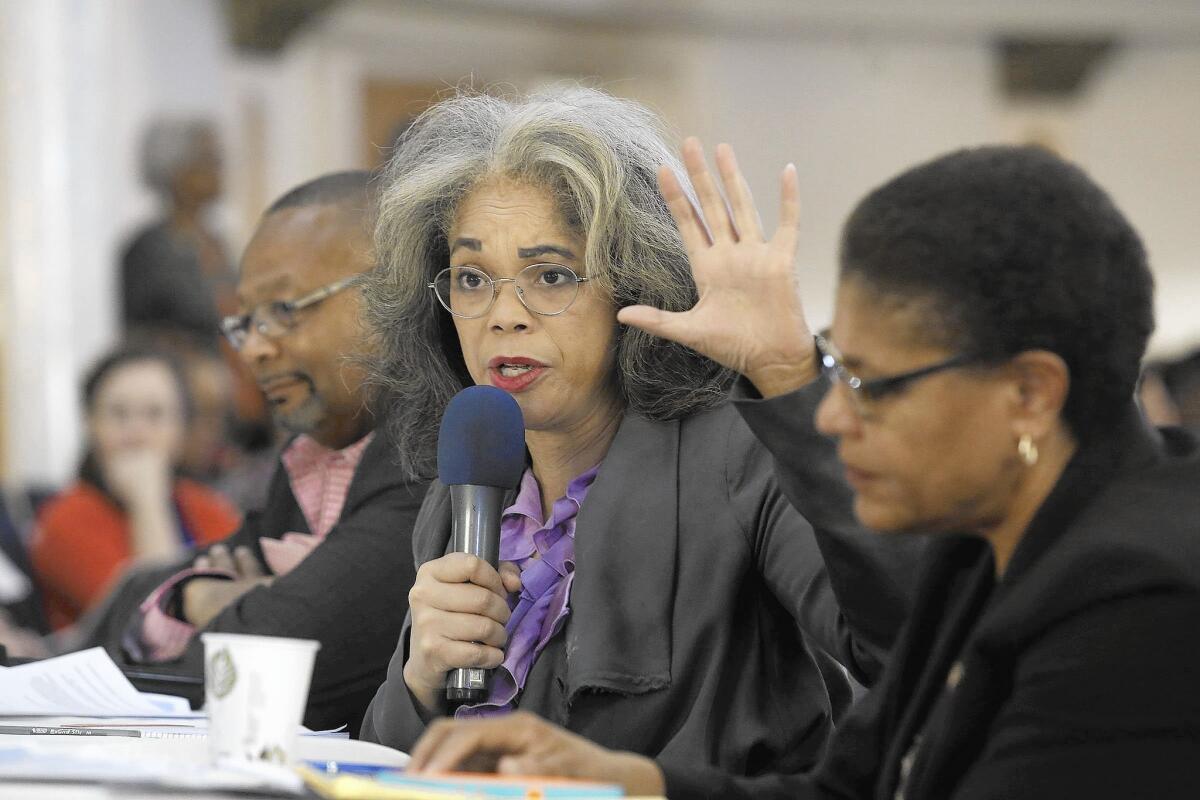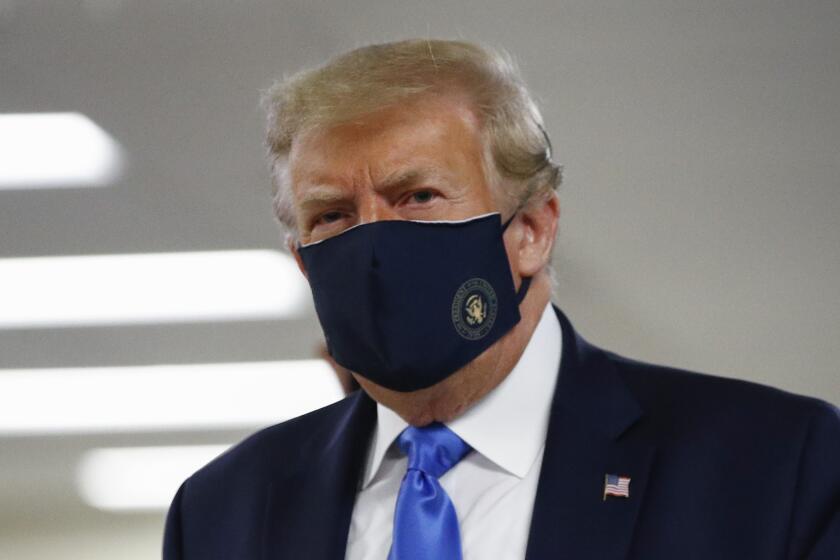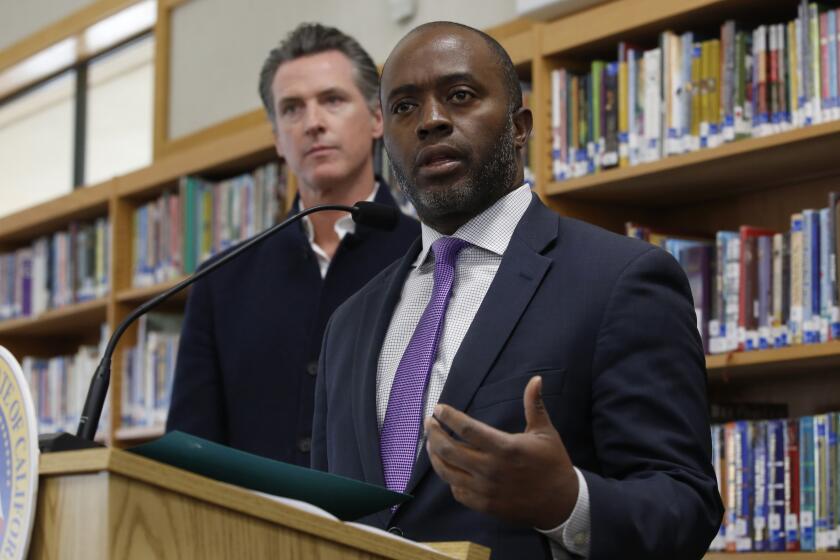Editorial: Defund warrior cops and give the money to guardian cops

As we’re reconsidering and overhauling American policing, let’s be careful not to inadvertently make more “warrior cops” — police who are strangers to the communities they patrol, who burst into neighborhoods like they were enemy turf, bash heads, make arrests and retreat back into their patrol cars. This is 911 policing. This is the policing of “Dragnet,” “Robocop,” “The Thin Blue Line.”
Over the years, citizens and their elected officials asked warrior cops to take on tasks that were once performed by an earlier generation of police who walked beats and knew the neighbors by name: Prevent crime. Maintain order. Make residents feel safe. Deal with the homeless, the mentally ill, the drunk, the addicted.
The problem was that there used to be places to take those suffering and down-and-out folks. There were psychiatric hospitals and cheap apartments. Now, cops who are trained in the art of steely confrontation are the ones dealing with social problems, which require a social worker’s skills. Things too often end poorly, with police aggression and with unarmed people dead.
Who says you can’t teach an old president new tricks?
In the two months since the killing of George Floyd, activists and politicians have advocated getting police out of the social work business and back in their patrol cars, limiting their duties to answering 911 calls. L.A. Mayor Eric Garcetti called for $150 million in cuts to the Los Angeles Police Department, and the City Council obliged, with little vetting and few details about how those cuts would manifest themselves in altered police duties.
Some shifts in resources make sense. Perhaps L.A.’s unarmed Department of Transportation officers, who currently are tasked with writing parking tickets, should also deal with moving violations on city streets. That would get the LAPD out of much of the business of car stops, in which missed turn signals or broken taillights are used as pretexts for intrusive searches.
Meanwhile, there is a growing consensus, even among the police themselves, that they are not the right people to deal with the homeless and the mentally ill. There should be more mental health professionals available to deal with psychiatric patients, more housing and services experts to deal with the homeless. Fewer cops, fewer jail cells.
But cut the police budget too deeply, or without sufficient forethought, and we’re left once again with invading, aggressive warrior cops, strangers to communities they patrol.
There is another way. A decade ago, the LAPD established the Community Safety Partnership program, in which police were essentially embedded in four public housing developments. The idea was to build trust and a sense of community safety, while also giving residents a large measure of agency. They would be the ones identifying community problems and would work with the police to solve them. It was not merely community policing, but something new. Advocates call it partnership policing. A recent program evaluation found that it works.
The program has since expanded beyond public housing to other communities and now serves nine sites. It fosters a policing ethos that could and should move beyond “troubled” neighborhoods.
Supporters sometimes see it as the polar opposite of “broken windows” policing, in which cops crack down on minor crimes to restore a sense of order, which in turn, the theory goes, prevents more serious crimes.
But just like partnership policing, the broken windows model was also meant to restore a sense of community safety. The problem was that that type of policing, while much studied and much discussed — and widely embraced, mostly by thinkers on the conservative side of the political spectrum — had few actual parameters. In many cities it quickly descended into “zero tolerance” — a style of law enforcement tailor-made for warrior cops.
There are also, as yet, few parameters for Community Safety Partnerships, so officers and commanders are inventing it as they go, and that’s a problem. Without some structure it could easily turn into just another stab at old-style community policing, in which the cops still drive the public safety agenda, although in consultation with the neighbors.
Partnership policing can help transform the warrior cop ethos, but it needs a how-to guide, training and ongoing evaluation. It needs thought and care, without which L.A. and other cities may find that they have defunded themselves into smaller but more aloof and more aggressive ranks of warrior cops.
California has largely provided local school districts with vague guidance on dealing with COVID-19. Now is the time for strong, specific leadership.
More to Read
A cure for the common opinion
Get thought-provoking perspectives with our weekly newsletter.
You may occasionally receive promotional content from the Los Angeles Times.












